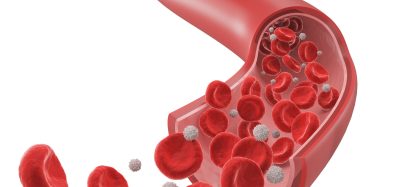Slowing intracellular transport boosts potential for RNA therapies
Posted: 10 July 2025 | Drug Target Review | No comments yet
Researchers at the University of Basel and Roche have discovered that slowing the intracellular transport of RNA-based drugs significantly improves their therapeutic impact.


In recent years, personalised therapies have become very important – especially for treating genetic disorders. Among these, antisense oligonucleotides (ASOs) are small synthetic molecules designed to interfere with the production of disease-causing proteins inside cells. These RNA-based therapies have already demonstrated success in treating previously incurable diseases like amyotrophic lateral sclerosis (ALS) and Duchenne muscular dystrophy.
The challenge: limited drug efficacy inside cells
Despite their promise, a major limitation of ASOs is that most fail to reach their intended targets within the cell. After entering cells, ASOs are transported into sorting compartments called endosomes. To work properly, they must escape these endosomes; otherwise, they are sent to lysosomes for degradation and lose their therapeutic effect.
Residence time in endosomes is key
The likelihood of ASOs escaping depends largely on how long they remain inside endosomes. The longer they remain in the endosome, the more time they have to escape.
The likelihood of ASOs escaping depends largely on how long they remain inside endosomes
Using a genome-wide CRISPR/Cas9 screen, the research team systematically knocked out thousands of genes to identify those influencing ASO activity. “We identified a large number of genes that either improve or impair ASO activity,” said Dr Liza Malong, lead author and Roche researcher. “Many of these genes are involved in the intracellular transport of ASOs.”
The role of gene AP1M1
A particularly important discovery involved the gene AP1M1 – which regulates the transport of ASOs from endosomes to lysosomes. “By selectively switching off this gene, ASOs remain longer in specific endosomes,” noted Dr Filip Roudnicky, senior co-author from Roche. “This prolonged residence time increases their chance of escaping from the endosomes and becoming effective.”
Tests in both cell cultures and mouse models demonstrated that this approach improved ASO efficacy significantly without needing to increase the drug dosage.
Toward more effective RNA therapies
The findings provide an extensive genetic map of factors influencing ASO activity and confirm that slowing down endosomal transport is a promising strategy to enhance the efficiency RNA drugs.
Professor Anne Spang highlighted the broader potential:
“This concept may also apply to other drugs and even to bacterial and viral pathogens. Shortening the residence time of pathogens in endosomes could reduce their chance of escaping and replicating within the cell. This might represent a novel strategy in the fight against infections.”
Related topics
Biotherapeutics, CRISPR, Drug Delivery, Drug Discovery, Drug Discovery Processes, Genetic Analysis, In Vitro, In Vivo, Molecular Biology, Personalised Medicine, RNAs, Screening, Sequencing, Targets, Therapeutics, Translational Science
Related conditions
Amyotrophic Lateral Sclerosis (ALS), Duchenne muscular dystrophy
Related organisations
Roche








